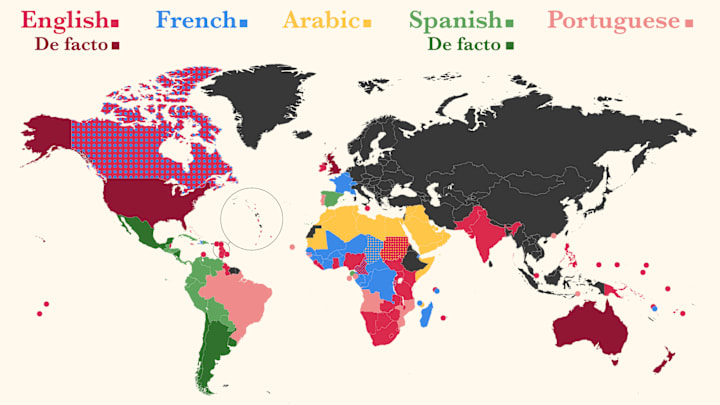It might be where the language itself originated, but oddly enough, English isn’t the official language of the United Kingdom.
In fact, the UK has no official language at all. Instead, English only has de facto official status: Its position as the national language of UK law, government, business, and education has never been enshrined in law. (The same used to be true of the United States until, after a centuries-long status identical to that of the UK, it adopted English as the legal, or de jure, official language in 2025.)
Around the world, though, the UK is something of an international outlier in not nominating an official national language, as the vast majority of countries have. And what’s more—as a new survey by language website WordTips has revealed—more countries have adopted English as an official language than any other language.
WordTips examined both the de facto and de jure official languages of every country and overseas territory in the world, and totaled up the number of times each one was listed. English came out on top with 59 of the world’s countries naming it as its official (or one of its official) languages by a large margin.
In Australia, New Zealand, and the United Kingdom, English is the de facto language, while the remaining 56* official anglophone countries include clusters in the Caribbean (Barbados, the Bahamas, Jamaica, etc.), the Pacific (Fiji, Nauru, Palau), and Africa (including Ghana, Kenya, and Tanzania). Canada (minus Québec) and the U.S. find themselves in the English total too, as well others like Singapore and the Philippines.

* The infographic was produced before the executive order making English the official language of the United States.
French comes in a respectable second place in the study, as the official language of a total of 29 countries. France sits alongside Monaco, Switzerland, Belgium, and Luxembourg as using French as its official language in Europe. Just as with English, there’s a further cluster of francophone countries in Africa (Benin, Guinea, Madagascar, and Rwanda among them). Canada makes the French list too, thanks to Québec, alongside the only other North American francophone nation, Haiti.
The rest of the top five is rounded out by Arabic in third place (with 22 countries), Spanish in fourth (15 countries), and Portuguese in fifth, whose list of 10 countries spans the entire globe: Angola, Brazil, Cape Verde, East Timor, Equatorial Guinea, Guinea-Bissau, Macau, Mozambique, Portugal, and São Tomé and Príncipe.
Single-figure languages filling out the remainder of the list include German and Swahili, which tie with six countries each; and both Russian (Belarus, Kazakhstan, Kyrgyzstan, Russia) and Italian (Italy, San Marino, Switzerland, Vatican City) are used as official languages in four neighboring nations each.
Neighboring nations make up much of the rest of the study, thanks to groups such as Quechua (the official language of Bolivia, Ecuador, and Peru), Berber (in Algeria and Morocco), and Swedish (Finland and Sweden). Hindustani is an official language in both India and Pakistan, and has the same status 7000 miles away in Fiji (which was historically used as a destination for indentured laborers during the British Raj). Likewise, Dutch is an official language in both Belgium and the Netherlands, but also in the former Dutch colony of Suriname, some 4500 miles away from Europe.
Discover More Fun Maps:
